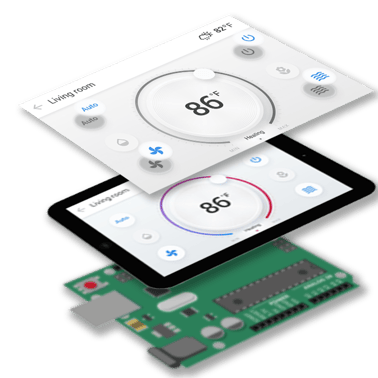Can Cross-Platform Development Prepare You for the Next Chip Shortage?
October 05, 2021 by Peter Schneider | Comments
Most car manufacturers across the globe are suffering from the chipset shortage. Manufacturers in other industries are slowing down their production for the same reason. Except a few. How are they doing it? How can other companies do the same?
Some car manufacturers – or OEMs (Original Equipment Manufacturers) – have chosen to build their own chips. Some of them work with their governments to create a local chipset industry. But there is one strategy that could be the most effective: Flexible Chip Sourcing.
Let me illustrate what I mean with one example that all of us know: Tesla. Elon Musk stated in his opening remarks of the Q2 2021 investor earnings call: “Regarding supply chain, while we are making cars at full speed, the global chip shortage situation remains quite serious. For the rest of this year, our growth rates will be determined by the slowest part in our supply chain, which is the wide range of chips that are at various times the slowest parts in the supply chain. … So, in fact, even achieving the output that we did achieve was only due to an immense effort from people within Tesla. We were able to substitute alternative chips and then write the firmware in a matter of weeks.”
To be open, I have no inside knowledge how Tesla does it. But I do know how one can replicate the same flexible chipset strategy. Besides a multi-vendor procurement approach, one needs a software architecture which allows swapping chips within weeks instead of months. It doesn’t matter whether you are a car manufacturer, you build medical devices, you produce consumer electronics, or you create control devices for industrial automation: as long your product has a digital display, you can protect yourself from future chip shortages with a flexible software technology.
The key to a flexible software technology is the ability to design the user experience independent from the underlying technology. We at Qt call this “cross-platform development”. Cross-platform development has many different characteristics: One major capability of a cross-platform approach is to separate the user interface model, the application logic, the operating system, and the hardware adaptation.

The second required capability is a technology framework which makes sure that you can focus on building a great user experience instead of having to worry about the lower levels of hardware adaptation. A cross-platform framework such as Qt includes the APIs to separate and layer the UI model, the application logic, the operating system, and the hardware. A cross-platform framework also includes ready reference software images for a variety of chips enabling you to adapt quickly. This flexibility allows you to swap the chip technologies, especially System on Chip (SoC) components, even if it means that they have a different Graphics Processing Unit (GPU) or they have a display with different specifications in terms of resolution or Dots Per Inch.
Describing in more detail how the “magic” of cross-platform development works on different levels of the software architecture would maybe extend this blog post too much. But if you are interested to hear more about the “how” and the “with what tools”, then please check out my on-demand webinar How Are Companies Overcoming the Global Chip Shortage with Cross-Platform Development.
Blog Topics:
Comments
Subscribe to our newsletter
Subscribe Newsletter
Try Qt 6.10 Now!
Download the latest release here: www.qt.io/download.
Qt 6.10 is now available, with new features and improvements for application developers and device creators.
We're Hiring
Check out all our open positions here and follow us on Instagram to see what it's like to be #QtPeople.


